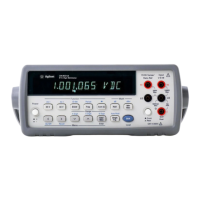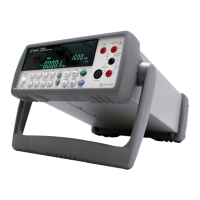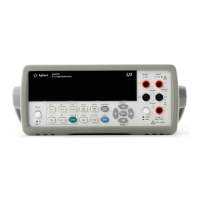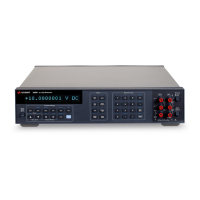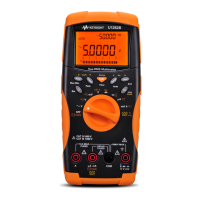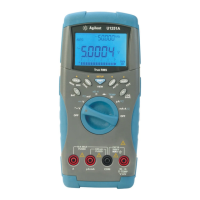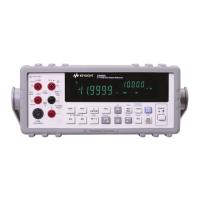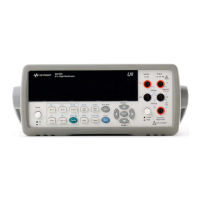Triggering
The meter’s triggering system allows you to generate triggers either
manually or automatically, take multiple readings per trigger, and insert
a delay before each reading. Normally, the meter will take one reading
each time it receives a trigger, but you can specify multiple readings (up
to 50,000) per trigger.
• You can trigger the meter from the front panel, with an external
trigger, or use autotriggering. Single triggering takes one reading each
time you press the
Single key. External triggering is like single
triggering, but the meter waits for a pulse on the rear-panel Ext Trig
(external trigger) terminal before taking a reading. Autotriggering
takes continuous readings at the fastest rate possible for the present
configuration. See also “To Trigger the Meter,” on page 47.
• Press
Shift Auto/Hold to return the meter to auto triggering.
Triggering the meter from the remote interface is a multi-step process
that offers triggering flexibility.
• First, you must configure the meter for the measurement by selecting
the function, range, integration time, etc.
• Then, you must specify the source from which the meter will accept
the trigger. The meter will accept a software (bus) trigger from the
remote interface, a hardware trigger from the Ext Trig terminal, or an
immediate internal trigger.
• Then, you must make sure that the meter is ready to accept a trigger
from the specified trigger source (this is called the wait-for-trigger
state).
• Finally, to make the measurement, you must provide an INITiate,
READ?, or MEASure command.
The diagram on the next page shows the meter’s triggering system.
Chapter 3 Features and Functions
Triggering
80
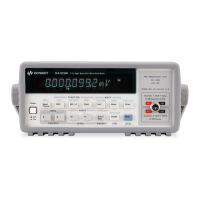
